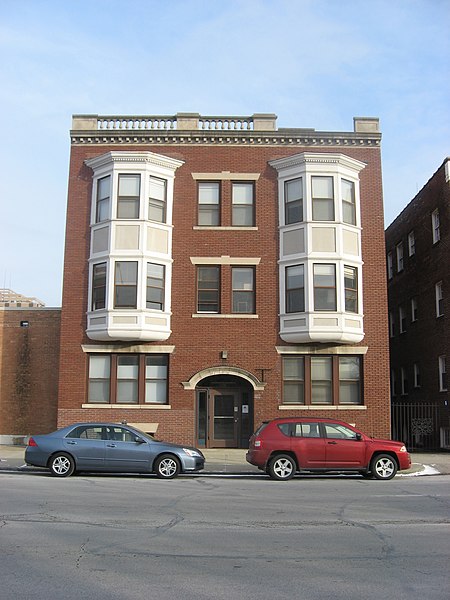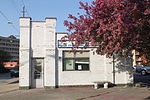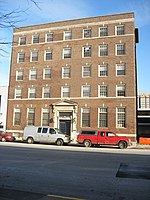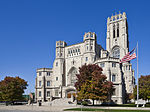The Grover
Apartment buildings in IndianaApartment buildings on the National Register of Historic PlacesIndianapolis stubsMarion County, Indiana Registered Historic Place stubsNational Register of Historic Places in Indianapolis ... and 3 more
Residential buildings completed in 1914Residential buildings in IndianapolisResidential buildings on the National Register of Historic Places in Indiana

The Grover is a historic apartment building located at Indianapolis, Indiana. It was built in 1914, and is a three-story, I-shaped, red brick building. It features a recessed entrance with limestone voussoir arch, bay windows on the upper stories, and a limestone frieze.: Part 2, p. 34–35 It was listed on the National Register of Historic Places in 1983.
Excerpt from the Wikipedia article The Grover (License: CC BY-SA 3.0, Authors, Images).The Grover
North Pennsylvania Street, Indianapolis St. Joseph
Geographical coordinates (GPS) Address Nearby Places Show on map
Geographical coordinates (GPS)
| Latitude | Longitude |
|---|---|
| N 39.776111111111 ° | E -86.155555555556 ° |
Address
North Pennsylvania Street 619
46204 Indianapolis, St. Joseph
Indiana, United States
Open on Google Maps










